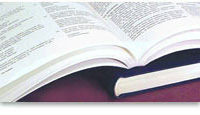USGS Standard Methods for Stream Tracer Injection Studies

Compilation by
Ken Bencala
<kbencala@usgs.gov>
To find these and other USGS publications, follow
this link.

Compilation by
Ken Bencala
<kbencala@usgs.gov>
To find these and other USGS publications, follow
this link.
This manual describes fluorometric procedures used by the U.S. Geological Survey in dye tracer studies to measure time of travel, dispersion, reaeration, and dilution-type discharge. The outstanding characteristics of dye tracing are (1) its low detection and measurement limits and (2) its simplicity and accuracy. The manual contains necessary background information about fluorescence, dyes,and fluorometers and a description of fluorometric operation and calibration procedures as a general guide for laboratory and field use. A brief section on aerial photography is also included because of its possible use to supplement ground-level fluorometry.
The measurement of water discharges at sites where measurement by conventional means is difficult or impossible as a result of excessive turbulence, debris, changing flow conditions, inaccessibility, or safety may often be accomplished using tracer dilution and velocity measurement techniques. Two dilution type techniques are feasible: (1) the slug-injection total-recovery method, which requires a simple injection of tracer but extensive sampling, and (2) the constant-injection equilibrium-plateau method, which requires a constant rate injection but less extensive sampling. Both methods can yield reliable results if proper techniques are used in their performance.
The U.S. Geological Survey is active in measuring time of travel in streams using dye tracers. This manual describes methods of measuring time of travel of water and waterborne solutes by dye tracing. The fluorescent dyes, measuring equipment used, and field and laboratory procedures are also described. Methods of analysis and presentation to illustrate time of travel of streams are provided.
The theory, field and computational procedures in measuring stream reaeration coefficients in-situ using dye and gas tracer injections to measure desorption, and thereby oxygen absorption is described in detail in this report.
Soluble tracers can be used to simulate the transport and dispersion of soluble wastes that may be introduced into surface waters. Measured tracer-response curves produced from the injection of a known quantity of soluble tracer can be used in conjunction with the superposition principle to simulate potential waste buildup in streams, lakes, and estuaries. Such information is particularly valuable to environmental and water-resource planners in determining the effects of proposed waste discharges.